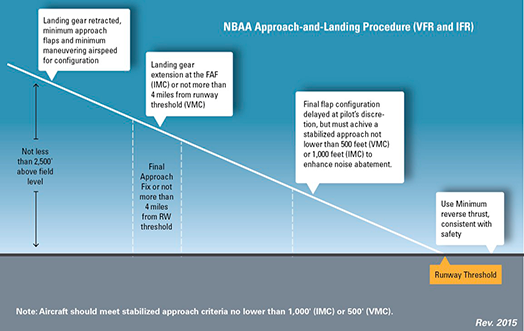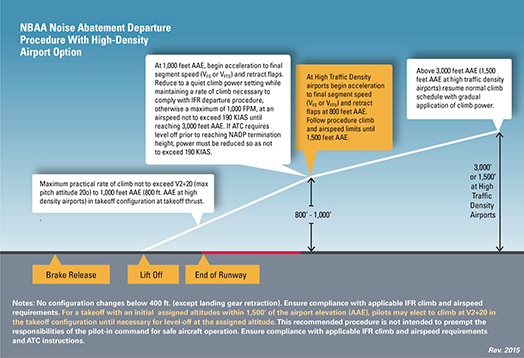Portland Intl Airport
Portland, Oregon, United States
Noise Abatement Information - Last update 07/03/2014
Overview
Thank you for your interest in the Portland International Airport Noise Management Program. We appreciate your commitment to noise abatement and helping us remain good neighbors.
The Port of Portland owns and operates three airports: Portland International, Hillsboro, and Troutdale. While each airport has its own unique noise issues, all three are surrounded by noise sensitive communities. We ask that you do your best to minimize noise impacts to residents who live around these airports.
Visiting military operators should refer to the DoD Airport Facility Directory or contact the Oregon Air National Guard 142nd Fighter Wing at DSN 638-4390 for more information. For all other noise abatement questions, please contact the Port of Portland’s Noise Management Department: at (503) 460-4100, toll free (800) 938-6647 or via email: pdxnoise@portofportland.com.
A Pilot Information Hotline is also available: (800) 938-5167
The information provided is not intended to preempt the authority or responsibility of the pilot-in-command, nor are they intended in any way to supersede or conflict with ATC instructions.
Arrivals
Runways: 10L, 10R, 28L & 28R | Aircraft Categories: B, C, D & E | Arrival Only
Use of the PDX RNAV Arrivals and RNP Approaches is preferred.
HHOOD TWO (RNAV) Arrival
KRATR ONE (RNAV) Arrival
TMBRS ONE (RNAV) Arrival
RNAV (RNP) Y Approach
RNAV (RNP) Z Approach
Departures
Runways: 10L, 10R, 28L & 28R | Aircraft Categories: C, D & E | Departure Only
Turbojet operators are encouraged to utilize one of the five RNAV noise abatement SIDs whenever possible
CASCADE ONE (RNAV)
HRMNS THREE (RNAV)
LAVAA FIVE (RNAV)
MINNE FOUR (RNAV)
WHAMY THREE (RNAV)
Preferential Runways
Aircraft Categories: A, B, C, D & E | Arrival & Departure
Runways 10L/R are the preferred arrival and departure runways when conditions permit. (Runways are clear and dry with a tailwind component of 5 knots or less).
Use of the crosswind runway (3-21) is discouraged unless weather or operational conditions mandate its use.
Preferential Instrument Procedures
Runways: 10L, 10R, 28L & 28R | Aircraft Categories: B, C, D & E | Departure Only
Use of the PDX RNAV SIDs is preferred.
CASCADE ONE (RNAV)
HRMNS THREE (RNAV)
LAVAA FIVE (RNAV)
MINNE FOUR (RNAV)
WHAMY THREE (RNAV)
Runways: 10L, 10R, 28L & 28R | Aircraft Categories: B, C, D & E | Arrival Only
Use of the PDX RNAV Arrivals and RNP Approaches is preferred.
HHOOD TWO (RNAV) Arrival
KRATR ONE (RNAV) Arrival
TMBRS ONE (RNAV) Arrival
RNAV (RNP) Y Approach
RNAV (RNP) Z Approach
Intersection Takeoffs
Runway 10L | Aircraft Categories: C, D & E
Unless otherwise directed by ATC transport category turbojet operators should expect a full length departure from runway 10L. However if conditions permit pilots may request and be assigned an intersection departure from Runway 10L at “E” [echo] or “T” [tango].
Runway 10R | Aircraft Categories: A & B
Piston and turboprop aircraft up to and including the DH8D – Intersection departures on Runway 10R at intersection “E” [echo], only at controllers discretion.
Runway 28R | Aircraft Categories: C, D & E
Unless otherwise directed by ATC transport category turbojet operators should expect a full length departure from runway 28R. However if conditions permit pilots may request and be assigned an intersection departure from Runway 28R at “A2” [alpha-2].
Engine Runup
All jet aircraft up to and including the McDonnell-Douglas MD-11 and turboprop aircraft over 12,500 pounds maximum take-off weight are required to use the ground run-up enclosure (GRE) located adjacent to the intersection of taxiways Charlie and Juliet.
Reciprocating engine aircraft types, rotorcraft, aircraft with a wingspan greater than the MD-11 (171 feet) and military jets capable of using the Oregon Air National Guard’s run-up facility are excluded from using the GRE.
Idle engine runs for purposes of leak checks and other maintenance procedures are not considered to be maintenance engine ground run ups and should not be done in the GRE.
Idle runs may be performed at the aircraft’s parking location.
The GRE is available for use 24 hours a day on a first-come first-serve basis. It is the responsibility of the aircraft operator to confirm the availability of the GRE before re-positioning the aircraft to the facility. Occupancy of the GRE by another aircraft is not an acceptable reason to conduct an unsuppressed run-up.
The GRE can be reserved by calling the GRE Hotline at 503-460-4520. To check the current status of the GRE as well as wind speed, direction and temperature information users can log on to http://www.portofportland.com/gre/grestatus.aspx
For more information about procedures for using the GRE please see the GRE Users Manual at http://www.portofportland.com/PDFPOP/GRE_Use_Manual.pdf
Flight Training
Training operations including touch-and-goes and practice approaches are discouraged between 2200L and 0600L.
Community Groups/Info
The Citizen Noise Advisory Committee (CNAC) is the official public forum for addressing community aircraft noise impacts associated with the operation of the Portland International Airport (PDX).
Established in 1998, CNAC is comprised of 15 citizens/members representing the Portland-Vancouver Metropolitan area. Maintaining a balanced membership that reflects the diverse residential, environmental, and business interests of the region is vital. Eleven of the fifteen members are appointed by their respective local jurisdictions, the remaining four are appointed by the Port of Portland.
As an advisory committee, CNAC collaborates with Port staff on addressing aircraft noise and operations impacts and provides a forum for residents to address questions and concerns. CNAC members review and comment on airport projects, provide input related to the PDX Noise Management Program, and assist the Port with outreach and communication efforts which are an essential components in the Noise Management program.
For more information about the PDX Citizen Noise Advisory Committee, contact the PDX Noise Management Department or visit us online at:
www.portofportland.com/Noise_Mgmt_CNAC_Home.aspx
Stage II
STAGE 2 RESTRICTIONS Stage 2 airplanes >75,000 lbs are prohibited from operating at airports within the 48 contiguous states.
STAGE 2 PHASEOUT U.S. Stage 2 Phase out complete as of 12/31/1999 (CFR Part 91.801). Stage 2 airplanes >75,000 lbs are prohibited from operating at airports within the 48 contiguous states.
Flight Track Monitoring
PDX WebTrak: http://webtrak.bksv.com/pdx
Noise Monitoring
Noise monitoring is in effect 24/7.
The Port of Portland owns 10 permanent noise monitors surrounding PDX and 4 monitors surrounding the Hillsboro Airport.
Visiting Military
Information pertinent to visiting/transient military operators including prop, turbo-prop, jets, and helicopter operations.
PDX is surrounded by residential communities in both Oregon and Washington. Use of afterburner is discouraged unless it is an operational requirement. Overhead approaches are discouraged. Training operations including touch-and-gos and practice approaches are discouraged between 2200 and 0600 local time. The 142nd Fighter Wing asks that you respect its home base and help minimize noise impacts to surrounding communities.
Please refer to the DoD Airport Facility Directory or contact them directly at DSN 638-4390 for military-specific noise program information.
Pilot Information Hotline
Pilot Information Hotline
A Pilot Information Hotline has been established to provide (prerecorded) operational information for pilots operating at PDX or HIO. Please take a moment to review the information provided.
The hotline includes the option of speaking with a staff member.
Pilot Information Hotline: (800) 938-5167
Thank you again for helping HIO remain a good neighbor.
Airport Contact Info
| Name: | Jason Schwartz, Senior Noise Analyst |
|---|---|
| Phone: | 503-415-6068 |
| Noise Hotline: | 800-938-6647 |
| Fax: | 503-548-5895 |
| Email: | jason.schwartz@portofportland.com |
| Web Address: | http://www.portofportland.com |
| Noise Complaint Address: | http://www.portofportland.com/Noise_Mgmt_Complain_app.aspx |
| Address: | 7200 NE Airport Way Portland OR 97218 |
NBAA Procedures
AOPA Noise Awareness Steps
Following are some general guidelines and techniques to minimize the noise impact produced by aircraft operating near the ground.
1. If practical, avoid noise-sensitive areas such as residential areas, open-air assemblies (e.g. sporting events and concerts), and national park areas. Make every effort to fly at or above 2,000 feet over the surface of such areas when overflight cannot be avoided.
2. Consider using a reduced power setting if flight must be low because of cloud cover or overlying controlled airspace or when approaching the airport of destination. Propellers generate more noise than engines; flying with the lowest practical rpm setting will reduce the aircraft's noise level substantially.
3. Perform stalls, spins, and other practice maneuvers over uninhabited terrain.
4. Many airports have established specific noise abatement procedures. Familiarize yourself and comply with these procedures.
5. To contain aircraft noise within airport boundaries, avoid performing engine runups at the ends of runways near housing developments. Instead, select a location for engine runup closer to the center of the field.
6. On takeoff, gain altitude as quickly as possible without compromising safety. Begin takeoffs at the start of a runway, not at an intersection.
7. Retract the landing gear either as soon as a landing straight ahead on the runway can no longer be accomplished or as soon as the aircraft achieves a positive rate of climb. If practical, maintain best-angle-of-climb airspeed until reaching 50 feet or an altitude that provides clearance from terrain or obstacles. Then accelerate to best-rate-of-climb airspeed. If consistent with safety, make the first power reduction at 500 feet.
8. Fly a tight landing pattern to keep noise as close to the airport as possible. Practice descent to the runway at low power settings and with as few power changes as possible.
9. If a VASI or other visual approach guidance system is available, use it. These devices will indicate a safe glidepath and allow a smooth, quiet descent to the runway.
10. If possible, do not adjust the propeller control for flat pitch on the downwind leg; instead, wait until short final. This practice not only provides a quieter approach, but also reduces stress on the engine and propeller governor.
11. Avoid low-level, high-power approaches, which not only create high noise impacts, but also limit options in the event of engine failure.
12. Flying between 11 p.m. and 7 a.m. should be avoided whenever possible. (Most aircraft noise complaints are registered by residents whose sleep has been disturbed by noisy, low-flying aircraft.)
Note: These recommendations are general in nature; some may not be advisable for every aircraft in every situation. No noise reduction procedure should be allowed to compromise safety.
Temporary Information (None)
None
Mandatory Restrictions (None)
None
Curfews (None)
None
Images / Diagrams (None)
None
Reverse Thrust (No Restrictions)
No restrictions
Pattern Altitudes (None Specified. Refer to FAA A/FD.)
None specified. refer to faa a/fd.
APU Use (No Restrictions)
No restrictions
Stage III (No Restrictions)
No restrictions
Noise Ordinance (None)
None
Prior Permission (PPR) Operations (None)
None
Airport Maps
Airport Contact
| Name: | Jason Schwartz, Senior Noise Analyst |
|---|---|
| Phone: | 503-415-6068 |
| Noise: | 800-938-6647 |
| Fax: | 503-548-5895 |
| Address: |
7200 NE Airport Way Portland OR 97218 |
Weather Data

Loading Most Current Data...
Airport Data
| Elevation: | 31 ft |
|---|---|
| City: | Portland, Oregon, United States |
| Sectional Chart: | Seattle |
| Flight Service: | Mc Minnville FSS |
| Control Tower: | Yes |
| Wind Indicator: | Yes |
| Fuel: | 100LLA |





